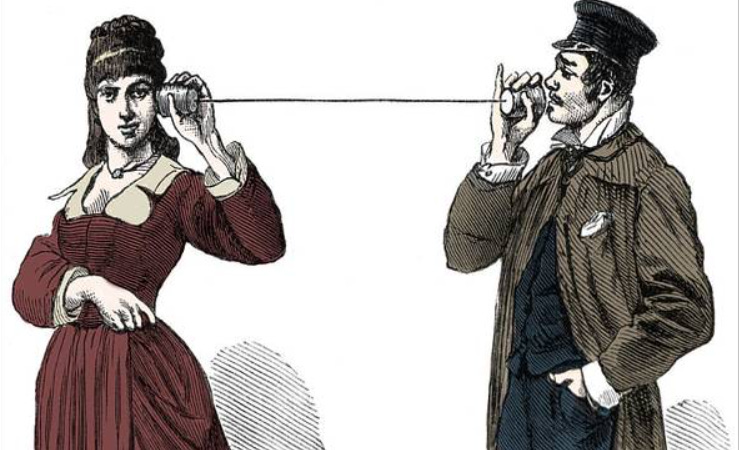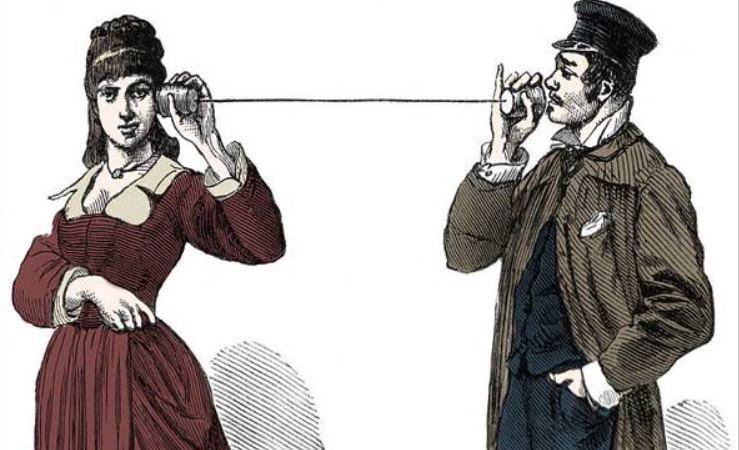The past causes the future. The future is undetermined, and cannot reach back to have an effect on the past. Call this the “principle of causality”. It is so ingrained in our thinking that we don’t know how to make sense of the world without it.
And yet, quantum mechanics subtly defies the principle. A young Einstein built the causal structure of reality into his relativity theory (1905), and a mature Einstein (1935) struggled with quantum mechanics precisely because of the way it was inconsistent with causal logic.
- The future reaches back in time to affect the past.
- This effect comes about in such a way that it is always fully masked by quantum unpredictability.
Statement #1 was controversial until 1964, when John S. Bell proved that it is inescapably a property of quantum mechanics. The shocking nature of retrocausality made some researchers so uncomfortable that they doubted quantum mechanics itself. Bell’s argument referred to a modified version of Einstein’s 1935 thought experiment, and as laser technology improved it became possible to realize the experiment in a lab. The quantum prediction was first vindicated in a quick-and-dirty experiment by John Clauser as a young post-doc in the Berkeley physics department. Ten years later, Alain Aspect improved and tightened the experiment. The quantum mechanical prediction prevailed. Retrocausality was no longer an abstraction but a demonstrated fact.
The conservatism of the scientific community being what it is, forty years went by before the Nobel Committee finally came to recognize the seismic implications of this work. Alas, Bell (1928—1990) was long dead, but they awarded the 2022 Nobel in Physics to Clauser, Aspect and another physicist who performed enhanced versions of the experiment.
Statement #2 is true according to quantum theory, but we don’t have the same kind of experimental verification to show that it is true in reality. In fact, since it is a statement about impossibility, it cannot, in principle, be verified by any experiment. But common sense offers a powerful indication that it must be true. If the effect of the future on the past could be controlled, even with modest precision, our friend in tomorrowland could send us stock market tips that would make us rich. Or I might peek at the article that I will publish next week, which will make writing it this week a cinch. Worst of all, we might do what King Laius tried when he learned that his son would one day kill him: we might strangle the boy in his crib to make sure that could not happen, and then the future would not happen in the way that prompted our action in the first place. This is a “closed causal loop” and it runs afoul of logic and experience.

In 1964, Bell already had thought out this paradox, and he was sufficiently expert in quantum theory to demonstrate proposition #2. In quantum mechanics, every measurement is blurred by a certain randomness. This is Heisenberg’s Uncertainty Principle. The situation that Einstein conceived in 1935, which Bell analyzed in 1964, and which Aspect realized in his 1982 lab invokes two people, Alice and Bob, far apart from each other, and making measurements on two different particles. These particles came long ago from a common source, and, according to quantum theory, their properties remain entangled forever after. Alice has her choice what measurement to make on her particle, and Bob can choose what measurement to make on his particle. In all cases, both of them obtain results that are completely random but correlated with one another to a greater or lesser extent. Alice may repeat the experiment 100 times, and she will get a string of 100 random results, say, 1 0 0 0 1 1 0 1 1 0… Bob chooses what measurement to make, and he also gets a string of 100 random numbers.
What Bell proved is that Alice’s choice of what measurements to make affects not only her own results, but Bob’s results as well. Reciprocally, Bob’s choices affect both his results and Alice’s results. Alice gets a different string of random numbers depending on what measurement Bob decides to make. For example, because of Bob’s choices, it might be 0 1 1 0 1 1 0 0 0 1 … instead of 1 0 0 0 1 1 0 1 1 0… But the results of the experiment still appear random, and neither Bob nor Alice can know what the result would have been if the other had chosen a different measurement.
Bell’s Theorem
Start with an unstable particle that has zero angular momentum. When it explodes into two particles, flying in opposite directions, you know that if one of the particles has positive angular momentum, the other must have negative angular momentum. So if you measure the angular momentum of one particle, you know implicitly what the angular momentum of the other particle, no matter how far away it is.
This much is true in both classical and quantum physics. There is no mystery about it, and no “spooky action at a distance”. What makes the situation interesting is the added quantum mechanical idea that you can’t measure a particle without changing it. In quantum mechanics if you measure the vertical angular momentum of an electron, then the horizontal angular momentum is randomized in the process. You can’t simultaneously know the vertical and horizontal angular momenta of an electron. (They are called “complementary variables”.)
Concerning the two entangled particles of the first paragraph in this box, what Einstein pointed out (1935) was that if you measure the vertical angular momentum of one and the horizontal angular momentum of the other, it’s possible to know both the vertical and horizontal angular momentum at the same time. So he argued that the quantum mechanical idea of complementary variables must be incomplete — not incorrect, but not the whole story, either. He suggested that the two particles emerging from the explosion carry extra information that helps them to coordinate with one another, even though this information can’t be extracted from an experiment on either particle alone.
What Bell (1964) did was to consider Alice and Bob’s option to measure in-between directions of angular momentum, pointed part-way between horizontal and vertical. Standard quantum theory predicts that these must be correlated with both horizontal and vertical in a particular way. What Bell showed with a mathematical proof was that these correlations could not be explained by Einstein’s idea that the two particles carried extra, hidden information in their journey. If the correlations were as QM predicted them to be, that could only be sustained if Alice’s choice of measurement actually has an effect on Bob’s particle far away. It did not escape anyone’s attention that this effect could just as easily be observed before as after Alice’s choice; hence Bell’s Theorem implies that information must be flowing backward in time.
Einstein, who died in 1955, was unavailable to express his surprise and angst.One of the two performs the experiment before the other, so either Alice is affecting Bob’s results backward in time, or else Bob is affecting Alice backward in time. The fact that the sequences are different is a result that can be derived from quantum theory. But the fact that both sequences are random means that Alice can’t send a message to Bob, nor can Bob send a message to Alice using the fact that their two particles are entangled.
The retrocausality implicit in quantum mechanics cannot be used to send information (even statistical information) from the future to the past. At least, that’s what quantum mechanics says.
But quantum mechanics is wrong about this. We have abundant experiments from parapsychology which demonstrate premonitions about the future appearing in people’s minds with patterns that stand out from randomness. Daryl Bem, a distinguished experimental psychologist at Cornell, threw his reputation to the winds in the late years of his career and published a series of experiments in an article titled Feeling the Future (2011). Julia Mossbridge has made time anomalies the focus of her parapsychological research. Here are two summaries of the state of the art, co-authored by Dean Radin, (2018) (2022). Executive summary: We all have premonitions that are tightly enough correlated with future events that they cannot be explained by chance. These come through our autonomic responses (heart rate, breathing, tiny differences in perspiration recorded as GSR) in preference to mental images or visions. In addition, there is a small set of people who receive clearer and more reliable messages about the future, and with training they can express these in words or pictures, not just autonomic responses.
Such talented people are being engaged to envision the future. The US intelligence services have been the biggest consumers of precognitive data (read about Project Stargate). Investment collectives have been making money from precognition (so I’ve heard). The Farsight Institute is regularly deploying skilled viewers. Stephan Schwartz has been looking decades into the future.
Certainly, our knowledge of fundamental physics is incomplete, and the elephant in the room is our inability to reconcile causal, reductionist physics with experiments in parapsychology indicating that holistic relationship and retrocausality are features of our reality.

Note that physicists use the word “non-local”. What they mean by this term includes what I am calling “retrocausal” — the future reaching back in time to cause the past.
I have never seen decent explanation of Quantum Theory. I wonder if that is because one does not exist. I wonder whether the limitations of mathematics are causing this situation. Maybe Reality needs to be defined via a computer program.